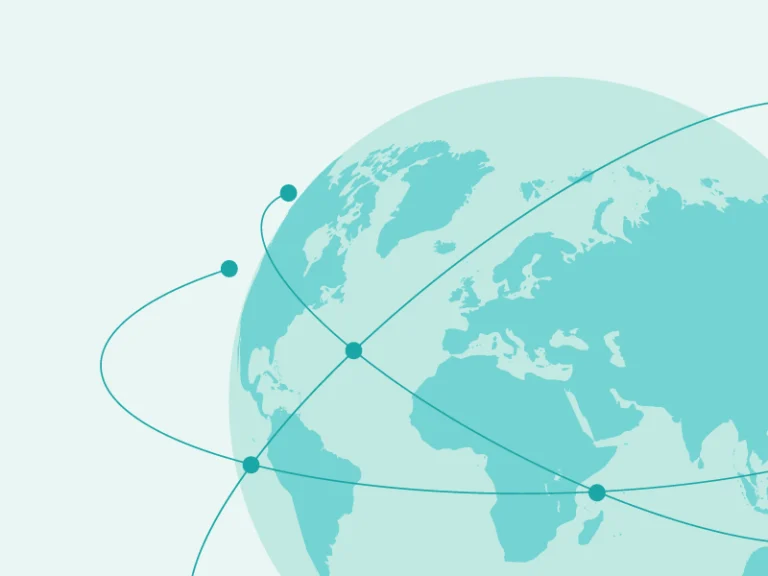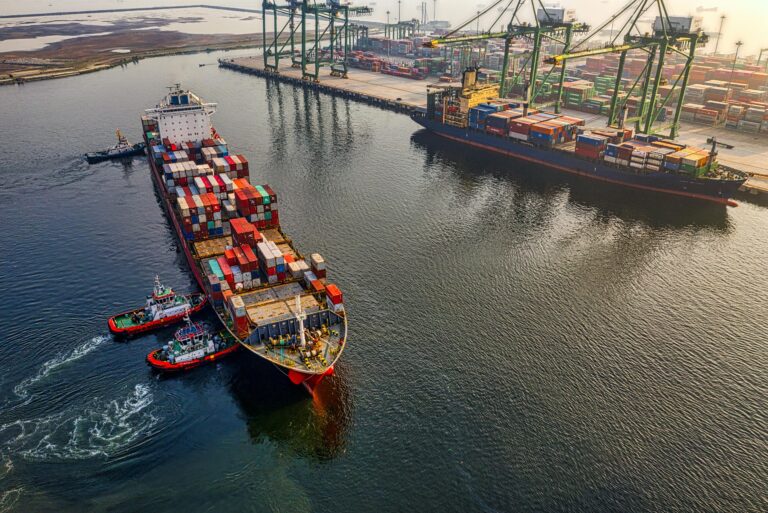Sur le marché mondial d’aujourd’hui, les opportunités pour les marques de se développer en Asie sont immenses. Avec ses économies en plein essor et sa classe moyenne en pleine croissance, l’Asie représente une mine d’or pour les entreprises. Cependant, naviguer dans le paysage logistique de cette région diversifiée peut être une tâche ardue. Comprendre ces défis est crucial pour assurer le bon déroulement des opérations et la satisfaction de vos clients.
L’attrait et le défi du marché asiatique
Le marché asiatique de l’e-commerce est en pleine explosion. Selon Statista, les ventes en ligne dans la région ont augmenté à un rythme sans précédent. Pourtant, la vente en Asie s’accompagne d’un ensemble unique d’obstacles, en particulier dans le domaine de la logistique. Voici ce que vous devez savoir pour tirer le meilleur parti des opportunités.
Infrastructures de transport

Des réseaux diversifiés et sous-développés
L’un des principaux défis auxquels vous pourriez être confronté est la diversité et souvent sous-développée des infrastructures de transport en Asie. Contrairement aux systèmes de transport transparents et avancés que l’on trouve dans les pays occidentaux, de nombreux pays asiatiques sont aux prises avec un mélange d’infrastructures modernes et obsolètes. Cela a un impact direct sur les délais de livraison et l’efficacité globale.
Considérations géographiques et de trafic
Des pays comme l’Indonésie et les Philippines sont constitués de milliers d’îles, ce qui rend le transport routier ardu et chronophage. Vous devrez tenir compte de ces retards et planifier en conséquence pour assurer des livraisons en temps opportun. Vous devrez également comprendre la variabilité des réseaux de transport afin de pouvoir définir des attentes de livraison réalistes.
Les routes encombrées de la Thaïlande et les embouteillages urbains au Vietnam posent également des défis importants. Dans les zones rurales de l’Inde, le mauvais état des routes peut entraver la livraison du dernier kilomètre, ce qui affecte la satisfaction des clients. Il est essentiel de comprendre ces nuances régionales et d’adapter efficacement vos stratégies logistiques.
Visibilité de la chaîne d’approvisionnement

Importance de la visibilité de bout en bout
Dans le domaine de la logistique, la visibilité est très importante. Avoir une vue claire de l’ensemble de la chaîne d’approvisionnement vous permet d’anticiper les perturbations, de gérer efficacement les stocks et de répondre aux attentes des clients. Cependant, il peut être difficile d’y parvenir en Asie en raison de la nature fragmentée des réseaux logistiques de la région.
Défis de l’intégration technologique
L’intégration de diverses technologies dans différents pays ajoute des couches de complexité. Chaque pays peut avoir son propre ensemble de systèmes et de normes technologiques approuvés, ce qui rend difficile une intégration transparente. Des sources de données disparates peuvent entraîner des angles morts dans la chaîne d’approvisionnement, ce qui rend difficile le suivi précis des expéditions.
Améliorer la visibilité
Pour s’attaquer à ces problèmes, certaines entreprises se tournent vers des technologies de pointe comme l’IoT, l’IA et la blockchain. Une autre option consiste à faire appel à un partenaire qui dispose de réseaux logistiques existants et qui peut vous fournir la visibilité dont vous avez besoin mais que vous ne pouvez pas obtenir par vous-même. Ces partenaires peuvent s’assurer que vous disposez d’un suivi en temps réel et peuvent donner à vos acheteurs des dates de livraison précises.
Espace d’entreposage et tarifs de fret

Forte demande d’espace de stockage
La croissance rapide de l’Asie a entraîné une forte demande d’espace de stockage, ce qui a considérablement augmenté les coûts. L’entreposage dans des endroits clés peut être prohibitif, en particulier dans les grandes villes où l’espace est limité. Vous voudrez élaborer une stratégie minutieuse pour équilibrer les coûts et la proximité avec votre clientèle.
Fluctuation des taux de fret
Les taux de fret en Asie sont notoirement volatils. Des facteurs tels que les prix du carburant, les tensions géopolitiques et la demande saisonnière peuvent entraîner des fluctuations importantes. Cette imprévisibilité peut peser sur les budgets et perturber la planification financière, d’où l’importance de mettre en place des stratégies flexibles.
Atténuer les problèmes d’espace et de tarif
Des stratégies telles que l’utilisation d’installations d’entreposage partagées et l’exploitation des outils de gestion des taux de fret peuvent aider à atténuer ces défis. L’établissement de relations solides avec les fournisseurs peut également offrir des tarifs plus stables et de meilleures conditions. De plus, les partenariats peuvent vous permettre de tirer parti d’économies d’échelle, ce qui facilite et rend plus rentable la poursuite de votre expansion mondiale.
Comportement et attentes des consommateurs

Boom de l’e-commerce en Asie
L’essor de l’e-commerce en Asie a remodelé le comportement et les attentes des consommateurs. Les acheteurs de la région sont férus de technologie et exigent commodité, flexibilité et service de haute qualité. Pour répondre à ces attentes, il faut des stratégies robustes, capables de gérer des volumes élevés et des délais de livraison rapides.
Attentes croissantes
Les consommateurs s’attendent désormais à une livraison le jour même ou le lendemain, à des retours faciles et à des mises à jour constantes sur le statut de leurs commandes. Avec des géants comme Amazon qui placent la barre haut, vous serez sous pression pour intensifier votre jeu. Le fait de ne pas répondre à ces attentes peut entraîner des avis négatifs et une perte d’affaires.
Adapter les stratégies logistiques
Vous pouvez vous adapter en vous assurant que vous disposez des bonnes options de livraison, y compris les choix omnicanaux, afin que les acheteurs puissent recevoir et retourner leurs commandes plus facilement. Un partenaire fiable peut vous aider à mettre en place des stratégies localisées afin que vous puissiez répondre aux demandes des clients dès le premier jour. De plus, fournir un suivi en temps réel et des fenêtres de livraison flexibles peut améliorer la satisfaction et la fidélité des clients.
Instabilité imprévue

Instabilités politiques, économiques et naturelles
La diversité du paysage de l’Asie implique également de faire face à diverses instabilités, des bouleversements politiques aux fluctuations économiques en passant par les catastrophes naturelles. Ces événements imprévus peuvent perturber les chaînes d’approvisionnement et affecter les délais de livraison.
Importance des plans d’urgence
Il est essentiel de disposer de plans d’urgence solides et fiables. Il s’agit notamment de diversifier les sources d’approvisionnement, de maintenir des stocks régulateurs, de disposer d’itinéraires de transport alternatifs et d’options logistiques redondantes en Asie.
Par exemple, lors des inondations de 2011 en Thaïlande, de nombreuses marques mondiales ont été confrontées à des perturbations massives. Ceux qui avaient mis en place des plans d’urgence ont réussi à réorienter leurs opérations logistiques et à minimiser l’impact. De même, les troubles politiques à Hong Kong ont amené certaines entreprises à déplacer leurs centres logistiques vers des régions plus stables.
Diversité des marchés

Diversité culturelle, réglementaire et économique
L’Asie n’est pas un monolithe ; Il contient des pays avec des cultures, des réglementations et des conditions économiques distinctes. Cette diversité vous oblige à adapter l’ensemble de votre stratégie transfrontalière – y compris la logistique – à chaque marché individuel, en tenant compte des nuances locales et des préférences des consommateurs.
Adapter les stratégies logistiques
Les consommateurs japonais privilégient la ponctualité et un service de haute qualité, tandis qu’en Chine, la rapidité et l’efficacité sont primordiales. Comprendre ces différences et travailler avec un fournisseur expérimenté peut vous aider à aligner vos stratégies et vos plans sur les attentes locales, améliorant ainsi la satisfaction des clients.
Approches logistiques localisées
L’approche la plus efficace et la plus efficiente consiste à s’associer à un expert qui a établi des relations avec des prestataires logistiques locaux fiables. De plus, un tel partenaire doit également comprendre les réglementations régionales et être capable de personnaliser les options d’emballage et de livraison. Cette flexibilité peut améliorer l’efficacité opérationnelle et renforcer les liens avec les clients locaux.
Coûts élevés de la logistique en Asie

Coûts de l’e-commerce transfrontalier
L’e-commerce transfrontalier est confronté à des coûts logistiques élevés en Asie, notamment des droits de douane, des taxes et des procédures douanières complexes. Ces coûts peuvent éroder les marges bénéficiaires et rendre difficile la tarification des produits compétitifs.
Décomposition des éléments de coût
Les coûts logistiques comprennent le transport, l’entreposage, la manutention et les droits de douane. Comprendre la répartition de ces coûts peut vous aider à identifier les domaines d’optimisation des coûts.
Gestion rentable
La gestion des coûts de faire des affaires en Asie peut nécessiter plus de ressources que vous n’en avez. Mais un manque de savoir-faire interne ou de ressources humaines ne doit pas vous tenir à l’écart de ce marché précieux. En vous appuyant sur l’expérience et les relations établies qu’un fournisseur vous offre, vous réduisez non seulement la charge de vos ressources internes, mais cela vous permet également d’accélérer la mise sur le marché et de gérer les coûts afin de maintenir une marge saine.
Conclusion
L’expansion sur les marchés asiatiques offre d’énormes opportunités, mais elle s’accompagne d’un ensemble unique de défis logistiques. Qu’il s’agisse de naviguer sur divers réseaux de transport, d’assurer la visibilité de la chaîne d’approvisionnement, de gérer des coûts élevés ou de s’adapter aux attentes des consommateurs locaux, vous devez être prêt à surmonter ces obstacles.
ESW a de l’expérience dans le lancement et la croissance de marques sur plus de 200 marchés mondiaux, y compris dans des pays d’Asie. Contactez-nous pour parler des objectifs de votre marque et des obstacles auxquels vous êtes confronté. Nous trouverons des solutions qui permettent d’élargir votre entreprise et de générer des revenus durables.





